
FaceTime Like a Pro
Get our exclusive Ultimate FaceTime Guide 📚 — absolutely FREE when you sign up for our newsletter below.

FaceTime Like a Pro
Get our exclusive Ultimate FaceTime Guide 📚 — absolutely FREE when you sign up for our newsletter below.
Control your Mac with your voice! Learn how to enable Voice Control, navigate apps, dictate text, and create custom voice commands for hands-free productivity.
Did you know your Mac lets you open apps, type messages, click buttons, and scroll through web pages — all with just your voice? Thanks to Voice Control, Apple’s powerful accessibility feature, you can operate your entire Mac hands-free.
Whether you need a voice-driven interface due to mobility limitations or simply want a new way to boost productivity, this guide walks you through everything about using and customizing Voice Control on Mac.
Voice Control is an accessibility tool on macOS that lets you control your Mac using voice commands. Unlike Siri, which is designed for short tasks, Voice Control is made for full system navigation and dictation.
You can open apps, scroll, click buttons, type text, and interact with any UI element — all by speaking naturally. It’s available in multiple languages, works offline, and processes commands on-device to preserve your privacy.
Even during a call, Voice Control remains active and functional. It displays item numbers, names, or a screen grid, so you can say things like “Click 5” or “Open Safari” to control what’s on screen.
Setting up Voice Control takes just a few steps:


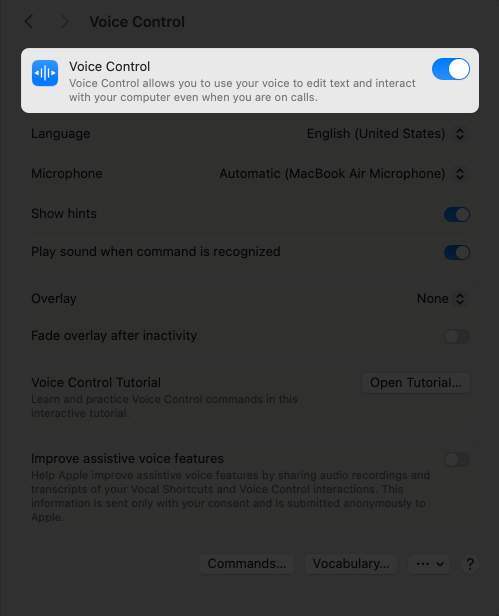
Voice Control offers a wide range of commands to navigate and control your Mac. Below are key ways to use it effectively.
Here are some core commands to get started:
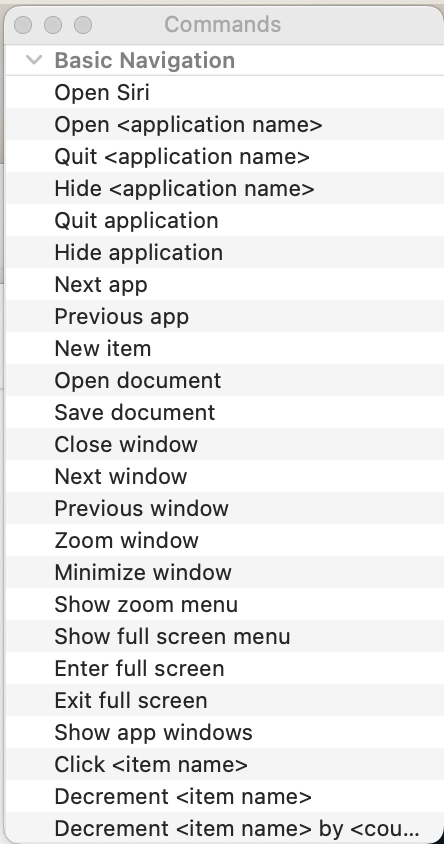
If you’re unsure of what to say, just say “Show commands” and a full list will appear.
Voice Control uses overlays to label on-screen items for easier voice interaction:

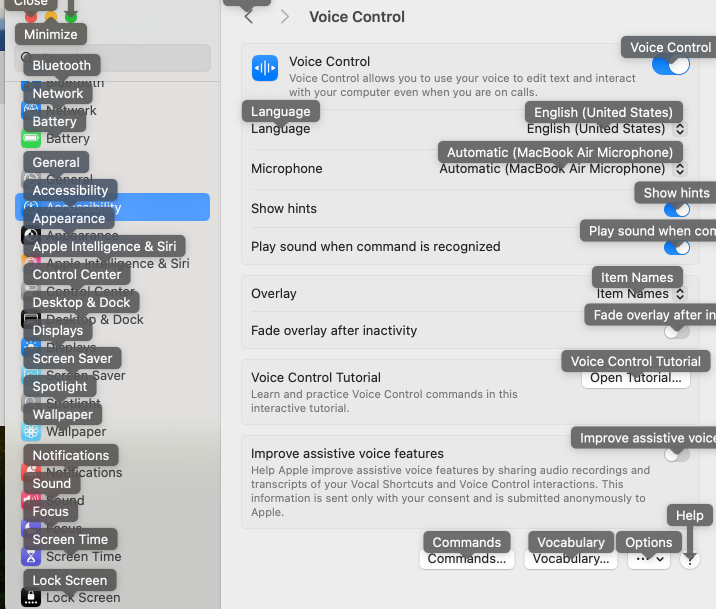
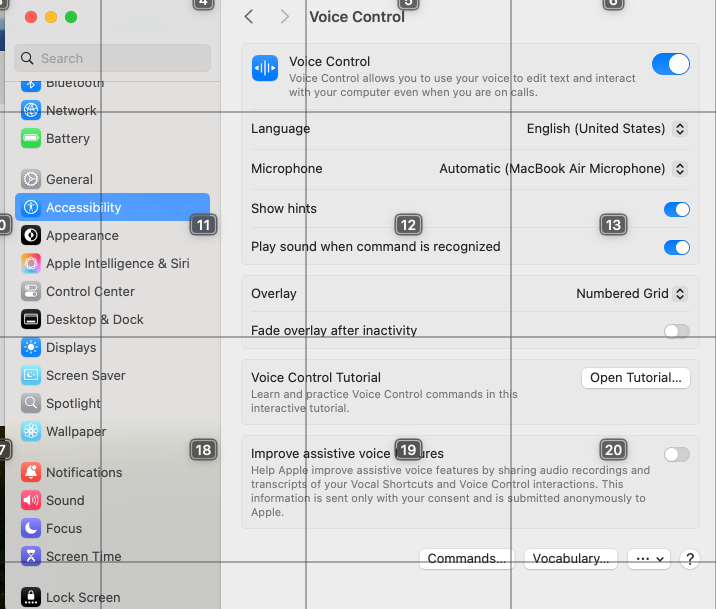
So, to show overlays, say, “Show numbers,” “Show names,” or the “Show grid” command. After using these commands, you can hide the overlays by saying, “Hide numbers,” “Hide names,” or “Hide grid.”
To automatically enable overlays, go to Settings → Accessibility → Voice Control → Overlay dropdown.
Related: Best Mac settings you should change right now
Voice Control also supports advanced dictation and text editing:
Dictation works in Notes, Pages, Safari, and any app with a text field.
If you have visual impairments, you can pair Voice Control with VoiceOver, Apple’s screen reader.
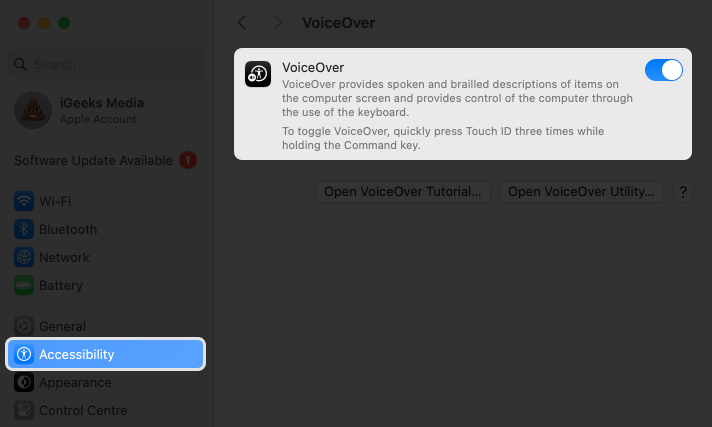
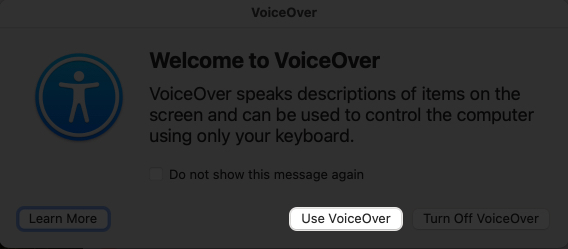
Now, VoiceOver reads screen content (e.g., “Button, Save”), and you can respond with Voice Control commands like “Click Save.”
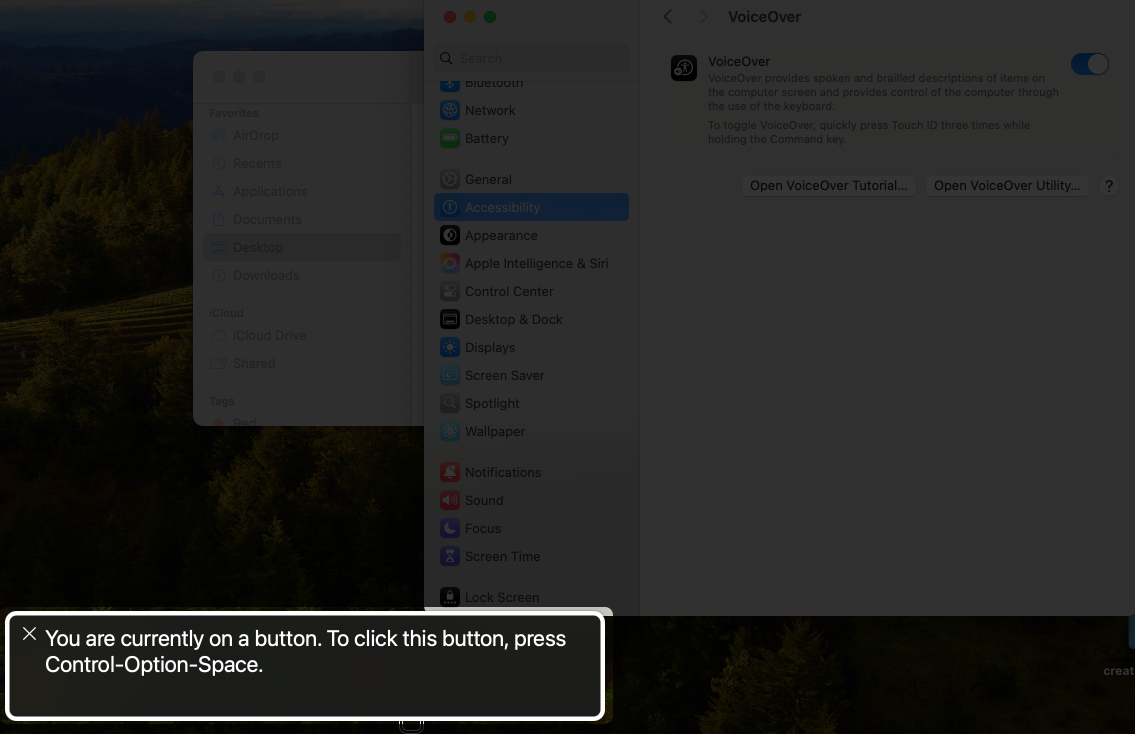
This combination makes macOS fully accessible for users with vision and mobility limitations.
Voice Control isn’t one-size-fits-all. Here’s how to tweak it for your needs.
You can turn on or off individual command categories (e.g., navigation, dictation) to simplify Voice Control:


This is helpful if you want only specific commands enabled to prevent accidental activation.
You can create custom voice commands to perform specific actions, such as opening a website or running a shortcut:
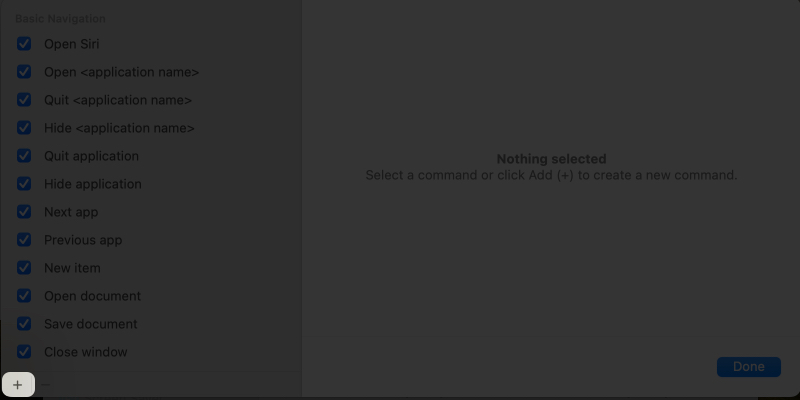
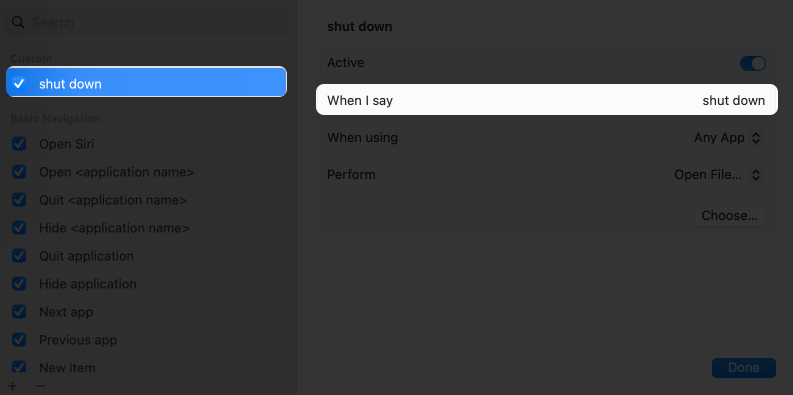
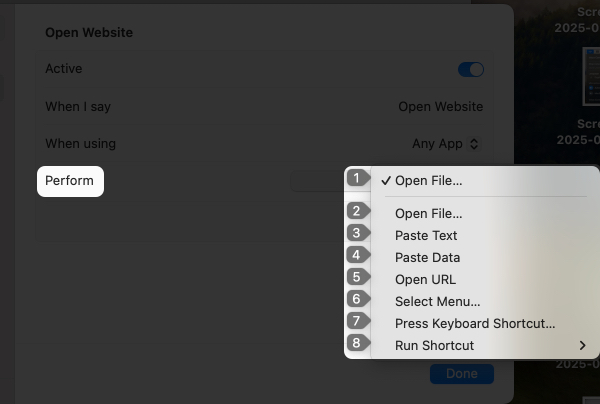

For example, you could create a command like “Open My Website” to launch your favorite site in Safari. Custom commands make repetitive tasks faster and more convenient.
Voice Control’s dictation is great, but it may struggle with niche terms or proper names. You can add custom words to its vocabulary:
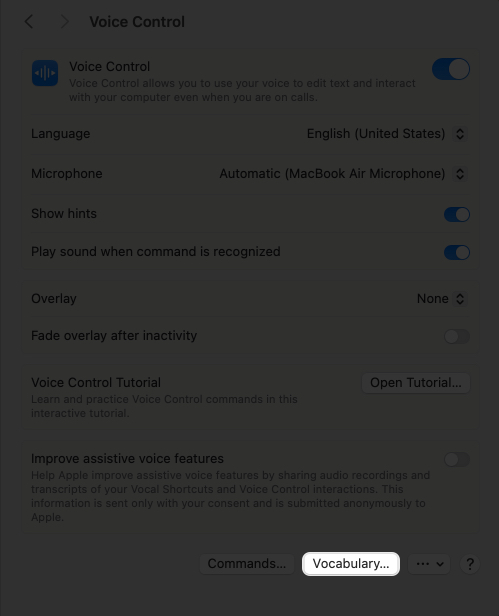


Now, Voice Control will recognize and transcribe these words accurately when you dictate. This is perfect for technical terms, names, or industry jargon.
There are several ways to pause or stop Voice Control:

To resume, say “Start Listening” or toggle it back on manually.
If Voice Control doesn’t respond or execute your commands, go through these steps to troubleshoot:
If Voice Control continues to crash after you update your Mac, you can contact Apple support for further assistance.
Voice Control on Mac isn’t just for accessibility—it’s a powerful productivity booster. From basic navigation to advanced custom commands, you can control your Mac entirely hands-free.
Whether you’re a multitasker, coder, or someone who prefers voice interaction, Voice Control offers a fully customizable experience that adapts to your workflow.
Ready to take command of your Mac? Just say the word.
Read more: